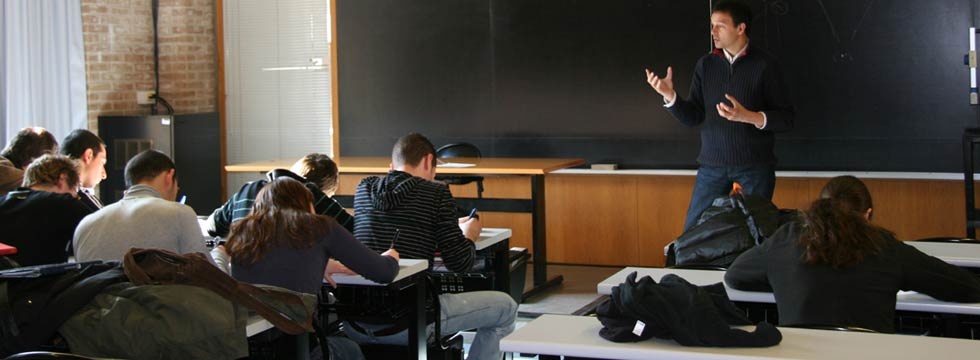One day in Segovia
Segovia is a World Heritage city containing various unique monuments. But when you come to Segovia you'll find the city offers much, much more. An old Jewish quarter, noble homes, outstanding views, and a green belt which is ideal for a pleasant stroll in the sunshine. This route offers a way to get to know the city in one day.
How to get there
Bus: there are several regular bus lines to Madrid, Avila and Salamanca with numerous daily services.
Train: several daily high-speed train services (AVE) connect with Madrid (approximately 30 minutes) and Valladolid (approximately 40 minutes). From the station, there is a bus service to the city centre (approximately 15 minutes)
By road: Madrid – Segovia: on the A6 motorway, then continue on the AP6 and AP61. Approximate travel time: 1 hour 15 minutes. Avila – Segovia: on the A51 and continue on the AP6 and AP61. Approximate travel time: one hour.
By air: the nearest airports are Madrid (87 kilometres), Valladolid (125 kilometres) and Salamanca (164 kilometres)
Morning
Visit to the Aqueduct, Jewish Quarter and Cathedral
(Approximately two and a half hours. Suggested timetable: 10:30 am to 1 pm.)
A good time to begin our visit to Segovia is at 10:30 am. Our first stop is in the Plaza del Azoguejo square, where we find the main Visitor Reception Centre and the imposing Aqueduct.
After having our photo taken under the monument, we can observe various interesting details such as the perfection of the stone-cutting, and the absence of any kind of adhesive material to keep the blocks together. Each one (weighing up to two tons) is simply placed on top of another, thus proving the precision of the Romans' work. If we look closely, we see that except for some of the lower stones, the all the others have ridges on their sides. These marks were made when the stones were dragged and hoisted into position.
From the Aqueduct, we walk towards the Jewish Quarter along the Calle Cervantes, and continue on Calle Juan Bravo until the Puerta de la Luna arch which leads onto the Paseo del Salón avenue. On the way we can take a look at the façades of the buildings with their typical decoration, normally featuring varied and attractive geographic and plant motifs. We also go past the church of San Martín, a good example of Romanesque art in Segovia, and the Casa de los Picos house. Some of the courtyards in this area –for example, the one in the Del Río house– are also worth visiting.
From the Paseo del Salón we have a good view of part of the city's green belt with the Alcázar fortress to the left. We can then walk up through the Puerta del Sol until the Calle de la Judería Vieja (the old Jewish Quarter), and visit the former Main Synagogue. Next, we go around the cathedral along Calle San Geroteo to the Plaza de la Merced square, thus taking in the whole of the Jewish Quarter.
After a good look at its spectacular exterior, we can enter the cathedral from the Calle del Marqués de Arco which gives onto the Plaza Mayor square.
Things to remember
It is advisable to wear comfortable shoes, as Segovia has numerous hills.
In the Visitor Reception Centre in Plaza Azoguejo square you can hire guides to show you around the whole city and its monuments.
The best conserved part of the Aqueduct is in Plaza Azoguejo square, although other sections of the monument are still standing and in good condition. However, these sections have been restored, as can be seen from the style of the arches and from the stones themselves. The rest of the aqueduct extends for about 14 kilometres into the mountains.
One of the best views of the Aqueduct can be had from the top of the steps beside it, next to the information centre.
There is a small market in the Plaza Mayor square on Thursday mornings.
The remains of the old Jewish Cemetery are located in the green area known as El Pinarillo, in front of the Jewish Quarter.
Lunch
This is a good time to sample the local gastronomy. There are a host of restaurants in the streets leading off the Plaza Mayor square, in the area around the Cathedral and in the Plaza del Azoguejo square.
If the day is warm and sunny, there are numerous pavement terraces where you can sit and enjoy the impressive views over the monuments. When you order, why not try some of the typical dishes like roast suckling pig or milk-fed lamb?
If you prefer fish, trout is the best option.
Afternoon
Visit to the Alcázar and up to the tower
(Aproximately one and a half hours. Suggested timetable: 3:30-5 pm.)
Segovia is a city which can be explored on foot, and a gentle walk will take us to the Alcázar. As well as visiting the interior, it is definitely worth climbing to the top of the tower (152 stairs), as it offers outstanding views of the church of Vera Cruz and the El Parral monastery.
There is also another surprise in store for us: all around us, the mountains spread in waves like a great sea. Nearby, in the centre of the city, stands the Cathedral. The Aqueduct is a little lower down, although it cannot be seen from the Alcázar. Segovia's layout and gradient have led many to liken the city to a great ship, with the Alcázar at the prow, the Cathedral as the main mast, and the Aqueduct as the anchor cast into the sea, represented by the mountain range. Once we are aware of this metaphor, we can enjoy the view from the top of the tower from the vantage point of a sailor.
Things to remember
The visit to the Alcázar has two parts: the rooms inside the building, namely the weapons room and the chapel; and the tower.
The climb to the tower, although not requiring any great levels of fitness, may be hard due to the shallow steps and the narrowness of the stairwell.
It is advisable to book in advance for guided visits in languages other than Spanish.
Looking out over a balcony with a thousand views
(Approximately one and a half hours. Suggested timetable: 5-6:30 pm.)
Segovia is surrounded by a stretch of greenery which offers up a different view at every turn: a mysterious castle (the Alcázar) which rises from among the trees, a large river, and a fortified citadel with multiple towers.
And all this makes it an ideal spot for photographers. What's more, this is a very luminous city, and particularly between the months of May and September it is the perfect place for strolling amid the greenery against the backdrop of the Alcázar.
A good way of spending the afternoon if we're feeling refreshed is to walk down from the Alcázar to the Eresma river, and cross the bridge to visit the church of Vera Cruz, the Fuencisla shrine and the convent of the Barefoot Carmelites, and the Parral monastery.
And if we take along something to eat, we can sit peacefully beside the river and have a picnic under the shade of the trees as we enjoy the afternoon.
Things to remember
There are three signposted routes around the city, all of which take us past the Jewish cemetery, the Fuencisla, Vera Cruz, El Parral and the convent of the Barefoot Carmelites. These are highly recommended on a sunny day and will guarantee you take home some unique photos of Segovia.
You can rent bicycles in the Plaza Mayor square, a great way to enjoy the city's green belt.
The monastery of El Parral has a plainsong mass every Sunday at midday.
Buying souvenirs
(Approximately one and a half hours. Suggested timetable: 7-8:30 pm.)
It's time to go back to the walled city and pick up a few souvenirs. We walk along the Puerta de Santiago, a road which is part of the Way of Saint James.
The Poets' Garden is a good place to stop and take some photographs.
The area around the Plaza Mayor square is a great spot to find a whole range of souvenirs of the city, including typical local crafts, and all kinds of gifts.
Dinner overlooking the illuminated aqueduct
The Paseo del Salón, the Plaza Mayor, the Plaza de Medina del Campo and the streets between them are full of places where we can whet our appetite with some typical Segovian tapas. But there's one unforgettable way of rounding off our day, and that is to enjoy a delicious dinner against the backdrop of the illuminated Aqueduct.
This is the perfect time to try some delicious wild mushrooms or tasty Cantimpalos chorizos.
Afterwards, if we want to get a taste of Segovia's nightlife, there are numerous venues in the San Millán area playing the latest music. If we feel like a leisurely stroll, the historic centre of the town, with all the monuments beautifully lit up, is an excellent option.
Things to remember
The Visitor Reception Centre arranges dramatised visits by night during July and August.







